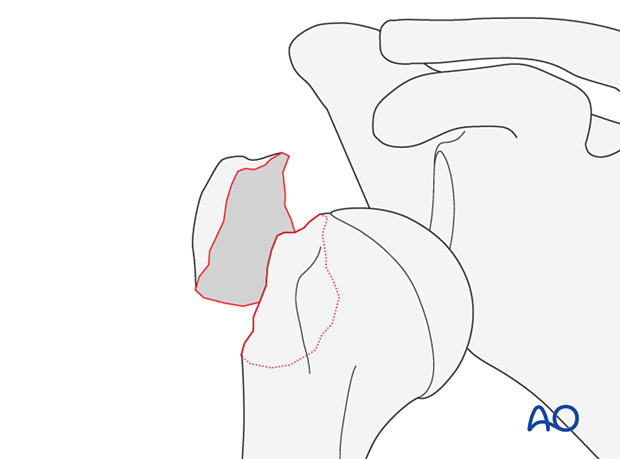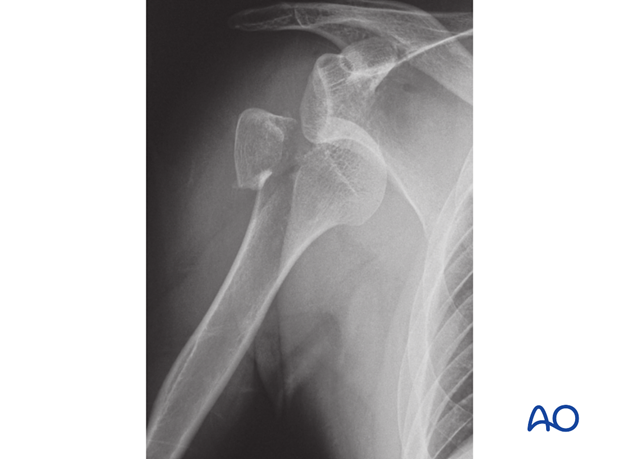Extraarticular 2-part, tuberosity, dislocation
These fractures are those associated with glenohumeral dislocations. The vast majority involve the greater tuberosity. Occasionally, a posterior dislocation results in avulsion of the lesser tuberosity. Very rarely, so-called luxatio in erecta is associated with a greater tuberosity fracture. All such fracture dislocations should be reduced promptly. Beware of a possible occult metaphyseal fracture that may displace during closed reduction (converting the fracture to a 3- or 4-part fracture). Tuberosity displacement must be reassessed after glenohumeral reduction, since it may not require surgical repair. With any glenohumeral fracture dislocation, an open reduction may be necessary.














